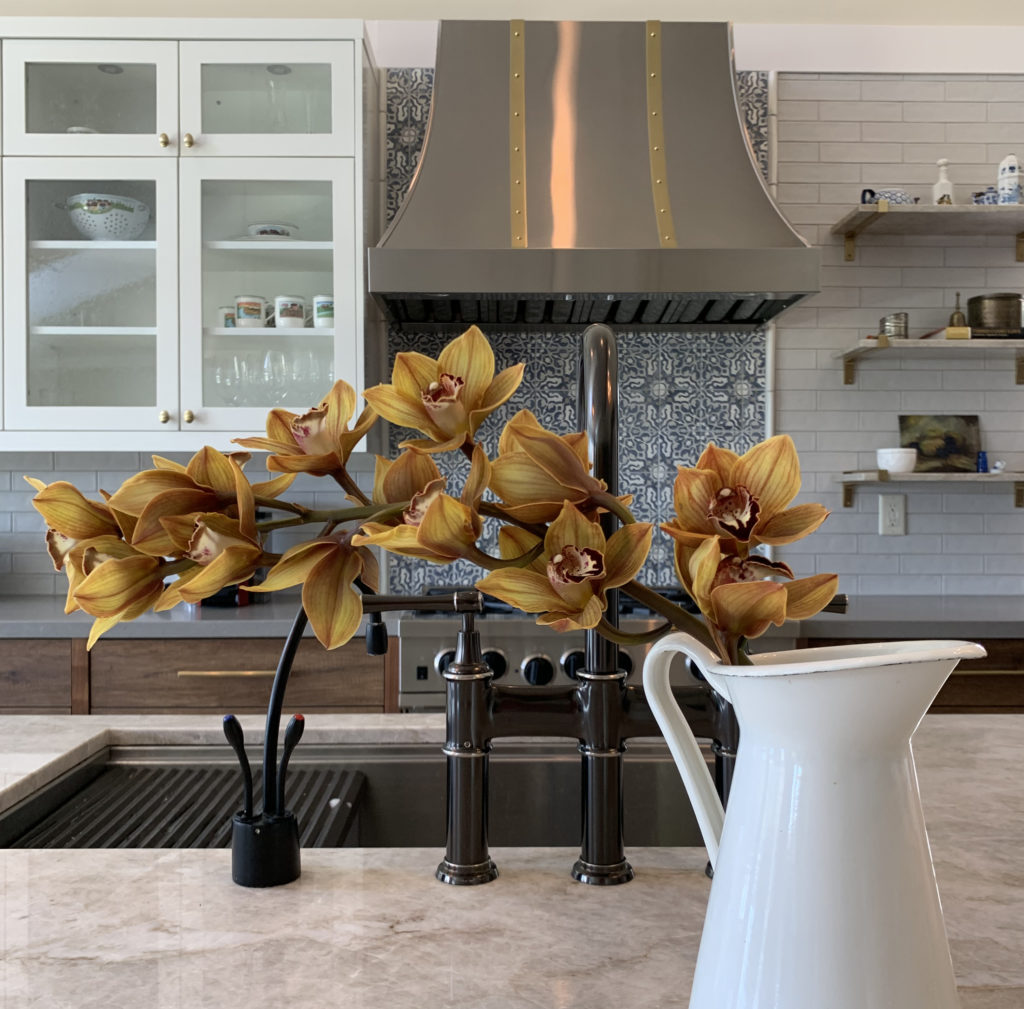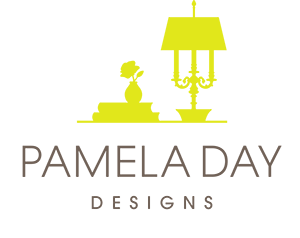Practical Feng Shui
Did you know we spend about 90% of our time indoors? Thus, it is critical to our health and happiness that we live in interiors that make us feel good! Feng Shui is not just about Eastern superstitions or well-placed totems, but rather making your home flow and feel comfortable. Here are a Four Basic Feng Shui Principles & some Quick Tips (in no particular order) for creating an optimal home environment that we can all understand and apply immediately.
Feng Shui Principle #1 – Incorporate Plants Humans relax and feel nurtured when surrounded by images & materials from nature. In this man-made world we inhabit we still long for the natural world. The solution is to incorporate plants. Hearty houseplants are great, but even good silk plants have come a long way. My personal favorite solution is bringing in fresh flowers. They need not cost a fortune; I generally pick up a few stems at Trader Joe’s as part of my weekly grocery haul and place them in a small vase next to my bed, on the kitchen table, the island, and in the entryway to instantly spruce up the home.
- Healthy plants and flowers uplift spirits, and specific plants will even help purify the air, e.g. bamboo, snake plants, spider plants, Gerber daisies and orchids. Incorporating natural images in art & accessories also helps to lower the antenna.

- Feng Shui Principle #2- Watch your back! With our back protected we feel an increased sense of security and relaxation. Imagine entering a restaurant in front of your friend and being led to the seating banquet. Which seat do you choose- the booth side facing the action, or the individual seat facing the wall with your back to the crowded restaurant? Most will choose the booth seat, this is known as the “command position,” and when you have your back “protected” you will generally want to stay longer than the other person who can’t necessarily discern why, but isn’t quite as comfortable.
- In your own home try to organize seating to maximize the number of people that have a view out and a protected back. High back chairs work well.
- Also try to avoid placing beds under windows and arrange them to face the door but not be in line with the door. Solid headboards (wood and upholstered) feel best, and also work wonderfully to add a feeling of security.
- Feng Shui Principle #3 Don’t point! It’s rude in almost all cultures. We put our guard up when things are pointed at us.
- While I personally love crisp clean moldings, walls & trim, I do attempt to minimize sharp pointy objects by opting for furniture with rounded lines rather than sharp angles, circular tables (where it makes sense), framing windows with soft drapes, stowing the knife block away, and avoiding spiky plants (choose succulents that don’t have a lot of spikes) particularly in the front of your home.
- Straight lines do not exist in nature, organic shapes are for more interesting and they add a sense of adventure. If a new landscaping project is in your future remember to integrate meandering curves.

-
Feng Shui Principle #4 – Create a balance between extremes. This is the basic Yin/Yang Theory. Feng Shui helps to make things feel “Just Right.” And create balance in one’s life and one’s space.
- Whenever you use the word “too” to describe a space you need to do the opposite word to fix it. For example, the living room is described “too dark,” “too dated,” “too cluttered,” and “too small,” so make it feel lighter, updated, organized, and bigger by adding windows, removing the brick around the fireplace, using white to bring in light, updating with more contemporary furnishings, etc.
Quick Feng Shui Tips for your Home
Wayfinding– Make sure your house number is visible! You want people to arrive calm, happy, relaxed and feel cared for, not stressed out. You cannot over-give directions. If people can’t find your house emergency services won’t know where your house is either. Make sure people can see where they’re going (if that’s the goal).
Full Spectrum Lighting– Our bodies are engineered to respond to nature. Our endocrine system utilizes sunlight to produce melatonin (sleep), serotonin (mood), and all of these hormones are hardwired to thrive in sunlight. Under full spectrum light we get an accurate depiction of light and color. Full Spectrum comes in LED, energy efficient bulbs. Important- Never put on make-up without a full spectrum light source!
Artwork– Art should always portray something positive, as the subliminal message can be very powerful. Artwork can be used as a visual affirmation for what a person wants to achieve in their life, thus images of pairs, are better than images of singles. Artwork shouldn’t have too many sharp angles or points. Art for walls should always fit the size of the wall on which it is to be placed (not too big or too small, scale-wise) and should be hung so that the center of the piece is at eye level for an average height adult (roughly 60” to center).

Kid-Free Zones- It has been said that couples don’t get along as well when the kid’s stuff takes over the house because symbolically complete power in the house has gone to the children. One of the biggest mistakes is giving the main room of the house over to the children. Kids can always bring the toys out and play with them, but they shouldn’t reside there. Make it easy for your child to clean up with reachable storage. Children need boundaries.
Healthy Home- Remember this simple fact- nothing smells better than nothing! A home can’t have good Feng Shui if the house isn’t healthy. Reduce artificial scents from air fresheners & candles. Many of these plug-ins and candles contain toxic phthalates which are linked to cancers and reproductive issues. When you breathe it goes into your lungs and your bloodstream = not healthy!
Hopefully, I’ve helped simplify Feng Shui. It can be useful to all if you just consider the basic human responses we have to shelter and always remember “Ugly Bad, Pretty Good” because it takes just as much money to make an ugly home as it does to make a pretty one!
- For a lot more information on the subject I refer you to, “Feng Shui That Makes Sense,” by Cathleen McCandless. This book covers everything you’d ever want to know about Feng Shui including the Five Elements of Feng Shui – how to energize and balance rooms with introduction of color and specific elements (Water, Wood, Fire, Earth & Metal) as related to the location of the home. Feng Shui can get really complicated but this book breaks it down nicely in terms we can all understand.
